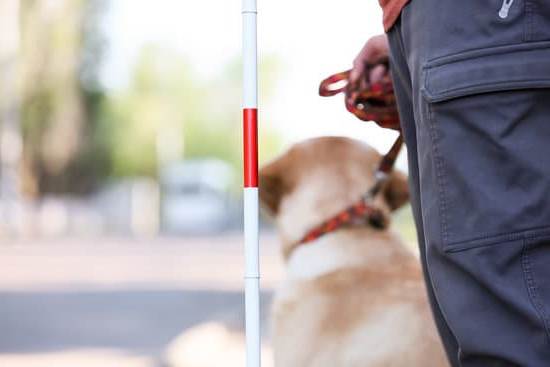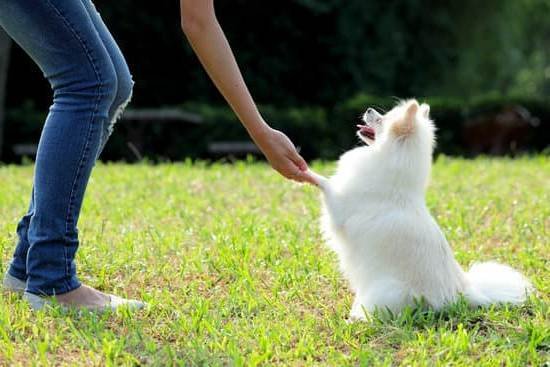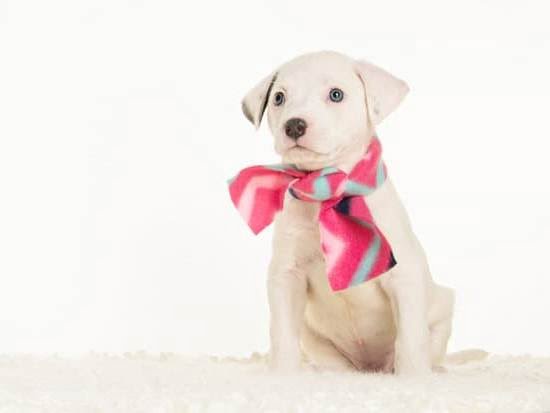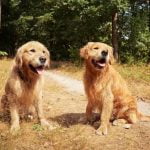Are you struggling with how to train an outside dog where to poop? Properly training your outdoor pup is essential for both their well-being and the cleanliness of your home and yard.
In this article, we’ll explore the importance of training your outside dog, provide tips on choosing the right spot for their bathroom needs, establishing a routine for bathroom breaks, using positive reinforcement, dealing with accidents, staying consistent with training, and understanding the role of diet in their bathroom habits.
One of the most important aspects of owning an outside dog is teaching them where to take care of their bathroom needs. Training your dog to poop in a designated area has numerous benefits for both you and your furry friend. Not only does it keep your yard clean and free from waste, but it also helps prevent unwanted odors from accumulating near your home.
Establishing a specific area for your dog’s bathroom needs will also help reduce wear and tear on your lawn or garden. Additionally, it can greatly benefit the environment by minimizing pollution caused by pet waste. By properly training your dog to poop outside, you are not only keeping your surroundings clean but also contributing positively to environmental health.
Choosing the Right Spot for Your Dog’s Bathroom Needs
When choosing the right spot for your dog’s bathroom needs, there are several factors to consider. First, pick an area that is easily accessible to your dog, especially when they need to go in a hurry. If the spot is too far away, it may lead to accidents inside the house. Additionally, choose an area that is relatively quiet and free from distractions, as this will help your dog focus on the task at hand.
Another important consideration is the type of surface in the chosen bathroom area. Most dogs prefer to use natural surfaces such as grass or soil, so try to find a spot with these elements if possible. If you live in an urban environment or don’t have access to a backyard with grass, you can use training pads or create a designated bathroom area using artificial turf.
It’s also essential to consider factors such as drainage and cleanliness when choosing a bathroom spot for your dog. Ensure that the area is well-drained and won’t become muddy or flooded during rain. Regularly clean up after your dog to maintain hygiene and prevent odors from building up in the area.
| Factors | Considerations |
|---|---|
| Accessibility | Easily accessible and free from distractions |
| Surface Type | Natural surfaces preferred; consider alternatives if necessary |
| Drainage and Cleanliness | Well-drained, easy to clean and maintain hygiene |
Establishing a Routine for Your Dog’s Bathroom Breaks
Training your outside dog where to poop is not just about choosing the right spot, but also about establishing a routine for your dog’s bathroom breaks. Dogs thrive on routine and consistency, so creating a schedule for when and where they should do their business is crucial in the training process.
To establish a routine for your dog’s bathroom breaks, consider the following tips:
- Set specific times for bathroom breaks: Dogs typically need to go to the bathroom first thing in the morning, after eating, after playtime, and before bedtime. Create a schedule that aligns with these times to ensure they have regular opportunities to relieve themselves.
- Take your dog to the same spot: Choose a designated area in your yard or outdoor space where you want your dog to do its business. Taking them to this same spot each time will help them associate that location with going to the bathroom.
- Be patient and consistent: Training takes time, so be patient with your dog as they learn the routine. Consistency is key, so stick to the schedule every day, even on weekends or holidays.
By establishing a routine for your dog’s bathroom breaks, you are setting them up for success in learning where it’s appropriate to poop outside. This consistent approach will help reinforce good habits and minimize accidents inside your home.
Using Positive Reinforcement to Encourage Desired Behavior
Training an outside dog to poop in a specific area can be a challenging task, but using positive reinforcement can greatly encourage the desired behavior. Positive reinforcement involves rewarding your dog for doing something you want them to do, making them more likely to repeat that behavior in the future.
Choose the Right Rewards
When using positive reinforcement, it’s important to choose rewards that are highly motivating for your dog. This could include treats, praise, or toys that your dog particularly enjoys. By using these rewards consistently when your dog poops in the designated area, they will learn to associate that behavior with something positive and be more likely to continue doing so.
Timing Is Key
It’s crucial to deliver the reward immediately after your dog finishes pooping in the designated area. This will help them make the connection between their action and the reward. If you wait too long, your dog may not understand why they are being rewarded and the association will not be as strong.
Be Patient and Consistent
Using positive reinforcement to encourage your outside dog to poop in a specific spot requires patience and consistency. It may take some time for your dog to fully grasp what is expected of them, so it’s important to remain patient and continue providing rewards each time they use the designated area. Additionally, consistency in providing rewards will help cement the desired behavior in your dog’s routine.
Dealing With Accidents and How to Correct Them
Training an outside dog to poop in the designated area can come with its fair share of accidents. It’s important to understand that accidents are a normal part of the training process, especially for puppies or older dogs who may be set in their ways. When accidents do occur, it’s essential to remain patient and consistent in your approach to correcting them.
One effective way to correct accidents is to interrupt your dog’s behavior when you catch them in the act of going to the bathroom in the wrong spot. You can do this by using a verbal cue such as “No” or “Oops” and then immediately redirecting them to the designated bathroom area.
Once they finish their business in the correct spot, be sure to praise and reward them with treats or verbal praise. This positive reinforcement will help them associate going in the designated area with a positive outcome.
If you come across an accident after it has already happened, resist the urge to scold or punish your dog. Instead, simply clean up the mess without drawing attention to it and refocus on ensuring that your dog gets plenty of opportunities to go in the right spot.
Consistency is key when it comes to correcting accidents, so be diligent about supervising your dog during bathroom breaks and providing ample opportunities for them to go outside. Remember, training takes time and patience, so don’t get discouraged by setbacks along the way.
Consistency Is Key
Training your outside dog to poop in a designated area requires consistency and patience. It is important to stick to a training schedule in order to reinforce the desired behavior. Dogs thrive on routine, so establishing set times for bathroom breaks will help your dog understand when and where they are supposed to relieve themselves.
When implementing a training schedule, it is crucial to take your dog outside at regular intervals, such as first thing in the morning, after meals, and before bedtime. By doing so, you are setting clear expectations for your dog and providing them with the opportunity to do their business in the appropriate spot. Consistently sticking to the schedule will help reinforce the habits you are trying to instill in your dog.
Additionally, it is important to remain patient and consistent throughout the training process. It is normal for dogs to have accidents, especially during the initial stages of training. However, it is essential not to scold or punish your dog for accidents as this can cause anxiety and confusion.
Instead, focus on positively reinforcing good behavior by offering praise and rewards when your dog successfully goes to the bathroom in the designated area. Remember that consistency is key when it comes to sticking to a training schedule and effectively teaching your outside dog where to poop.
Tips for Training Older Dogs to Use a Designated Bathroom Area
As dogs age, they may become set in their ways and resistant to change, especially when it comes to their bathroom routine. However, with the right approach and patience, you can successfully train older dogs to use a designated bathroom area outside. Here are some tips to help you with this specific training challenge:
Gradual Transition
Older dogs may have established habits that are deeply ingrained, so it’s important to make the transition gradual. Start by choosing a designated bathroom area that is easily accessible for your older dog. Take your dog to this area on a leash and allow them to familiarize themselves with the new spot.
Patient Reinforcement
Positive reinforcement is key when training older dogs. Praise and reward your dog whenever they successfully use the designated bathroom area outside. This will help them associate this spot with positive outcomes, making them more inclined to continue using it for their bathroom needs.
Consistent Schedule
Older dogs thrive on routine, so establishing a consistent schedule for bathroom breaks is crucial. Take your dog out at the same times every day, such as after meals or first thing in the morning and last thing at night. Consistency will help your older dog understand when and where they are expected to go to the bathroom.
By following these tips and being patient with your older dog, you can successfully train them to use a designated bathroom area outside. Remember that every dog is different, so be prepared to adjust your approach based on your dog’s individual needs and preferences. With time and effort, you can help your older canine companion adapt to a new bathroom routine that benefits both of you.
Understanding the Role of Diet in Your Dog’s Bathroom Habits
A dog’s diet plays a crucial role in their bathroom habits, including where and when they poop. The type and amount of food your dog eats can directly impact their digestion and elimination patterns. Here are some key points to consider when it comes to the role of diet in your dog’s bathroom habits:
- High-Quality Food: Feeding your dog a balanced, high-quality diet is essential for maintaining good digestive health. Look for dog foods that list meat as the first ingredient and avoid products with excessive fillers and artificial additives.
- Fiber Content: Adequate fiber intake is important for promoting regular bowel movements in dogs. Be sure to choose a dog food that contains an appropriate amount of fiber, which can help prevent constipation and diarrhea.
- Proper Hydration: Ensuring that your dog has access to clean, fresh water at all times is vital for their overall health, including proper digestion. Dogs that are not properly hydrated may experience irregular bowel movements.
In addition to choosing the right food for your dog, it’s important to monitor their eating schedule. Feeding your dog at consistent times each day can help regulate their bathroom habits and make it easier to predict when they will need to go outside.
By understanding how your dog’s diet influences their bathroom habits, you can make informed decisions about what and when to feed them, ultimately contributing to successful potty training efforts.
The Benefits of Training Your Dog to Poop Outside
In conclusion, training your outside dog where to poop is an essential aspect of responsible pet ownership. By understanding the importance of properly training your dog and choosing the right spot for their bathroom needs, you are not only ensuring a clean and healthy environment for both your pet and your household, but also contributing to a safer and cleaner community.
Establishing a routine for your dog’s bathroom breaks and using positive reinforcement to encourage desired behavior are key elements in the training process. Consistency is also crucial in this endeavor, as sticking to a training schedule will help reinforce good habits and minimize accidents. Additionally, it’s important to understand the role of diet in your dog’s bathroom habits, as a balanced diet can contribute to regular and healthy elimination.
In addition to the health benefits for your pet, training your dog to poop outside also has positive environmental factors by reducing waste in landfills. It also prevents contamination of water sources with dog waste, contributing to healthier ecosystems.
Overall, taking the time and effort to properly train your outside dog where to poop is a win-win situation for both you and the environment. It leads to a cleaner, healthier living space for everyone while minimizing negative impacts on the environment.
Frequently Asked Questions
How Do You Train an Outside Dog to Poop in One Place?
Training an outside dog to poop in one place involves consistent positive reinforcement and patience. Choose a specific spot in the yard and take the dog to that spot every time they need to go. Use verbal cues like “go potty” or “do your business” to associate the action with that location.
When the dog successfully poops in that designated spot, reward them with treats and praise. Over time, the dog will start to understand where they should go.
Where Should Dogs Poop Outside?
Ideally, dogs should be encouraged to poop in a specific area of the yard, away from high-traffic areas or garden beds. This can help keep the rest of the yard clean and make it easier for owners to pick up after their pets.
Choosing a quiet, secluded spot can also give dogs a sense of privacy and security when doing their business.
How Do Dogs Decide Where to Poop?
Dogs rely on their sense of smell and surroundings to decide where to poop. They may be attracted to areas that have been previously soiled by other animals or naturally have more appealing scents for them.
Additionally, dogs might choose different spots based on factors like comfort, safety, and familiarity. Understanding these influences can help owners encourage their dogs to consistently use a specific area for pooping.

Welcome to the blog! I am a professional dog trainer and have been working with dogs for many years. In this blog, I will be discussing various topics related to dog training, including tips, tricks, and advice. I hope you find this information helpful and informative. Thanks for reading!





